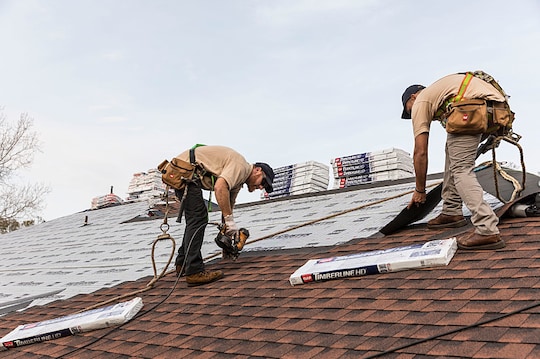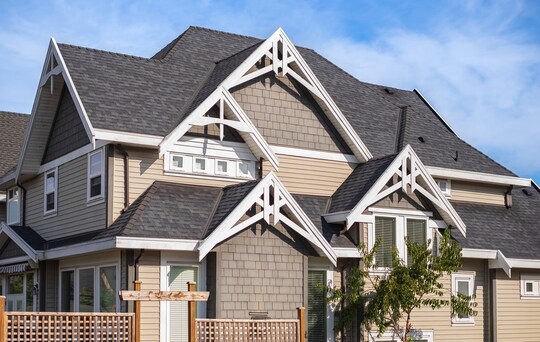
Tu hogar
How Long Does It Take to Replace a Roof?
If your roof has been showing signs of wear and you've finally decided to replace it, you'll naturally want to know what to expect and how long the process will take. But simply asking a contractor "How long does it take to replace a roof?" won't always give you the same answer.While an asphalt shingle roof replacement on an average-sized home can often be completed in one to two days, many factors can influence how long the replacement actually takes. Here's a look at the steps involved in a roof replacement and the variables that can affect the timing.Securing an EstimateThe first step in any roof replacement project is meeting with your contractor. They'll assess your roof, secure measurements, and review material choices with you. Many contractors rely on technologies like aerial imagery and remote measurement services that allow them to deliver an estimate within a few hours or the next day.After reviewing your estimate and roofing system options, your contractor should have a good idea of how long the project will take (and how much it will cost) based on their past experiences.Accessing Your RoofOnce crews arrive at your home to begin work, they'll need to use ladders or scaffolding to get themselves, their tools, and the roofing materials onto your roof. Complex landscaping, closely situated neighbors, or even a fence around the property can make it more difficult and time-consuming to position dumpsters, stage materials, and dispose of waste.Having to move items around and prepare the space before work can begin can add hours to the front end, potentially causing the project to take longer overall. Accordingly, make sure your roof is accessible and your property is free of hazards before the crews arrive.Discovering Hidden Roof IssuesYour roof replacement includes removing the old roofing system, down to the plywood roof decking. This process is typically accomplished in a few hours. Once the wood decking is exposed, your contractor will be able to see if any water intrusion has caused it to rot.Damaged or rotting plywood will need to be replaced, which can add time to your roof installation-anywhere from a few hours to an extra day.Calculating Your Roof's Size and ComplexityIf your home has a steep pitch-generally greater than an 8:12 slope-the roofing crews will require specialized safety equipment, and they won't be able to work as fast as they could on a lower-pitched roof. Roofs that feature many intersecting planes, angles, and penetrations take longer, as these features require crews to cut more shingles during the installation, adding time to the job.Factoring in Weather on Installation DayIf rain is in the forecast, this could cause your roofing installation to take longer. If the morning weather is clear, but rain is expected in the afternoon, the crews may only complete part of your roof and have to return the next day to finish the installation.Roofers typically start work early in the day. But during cold weather, frost on the roof can make it dangerous. They'll have to take extra safety precautions or start working later in the morning after the frost is gone.All of these environmental factors can impact the roofing crews' ability to work. So, ask your contractor about contingency plans before work begins, and inquire how weather might push the completion date.Improving VentilationVentilation is critical to your roofing system's performance. It prevents moisture from becoming trapped in your attic, which can lead to interior damage to your home. If your contractor determines your home has poor attic ventilation, they'll need to correct that during the roof installation process, adding time to the project.So How Long Does It Take to Replace a Roof?No two roofs are the same, so the best answer to "how long does it take to replace a roof" will vary based on factors specific to your home and location. Start by asking your contractor for a project timeline, and inquire how they'll manage any issues that can cause delays, such as hidden damage or the weather.When you work with a GAF-certified roofing contractor, you can rest assured they have the experience and knowledge to keep your project on track, efficiently handling unexpected delays or other challenges.Interested in getting an estimate on a roof replacement? Get started with your project by finding a GAF-certified contractor*.*Contractors enrolled in GAF certification programs are not employees or agents of GAF, and GAF does not control or otherwise supervise these independent businesses. Los contratistas pueden recibir beneficios, como puntos y descuentos de recompensa por lealtad en herramientas de comercialización de GAF por participar en el programa y ofrecer a GAF garantías mejoradas, que requieren el uso de una cantidad mínima de productos de GAF. Tus tratos con un contratista, y cualquier servicio que te proporcione, están sujetos a los Términos de uso del contratista de GAF.
Por Karen L Edwards
22 de diciembre de 2024



